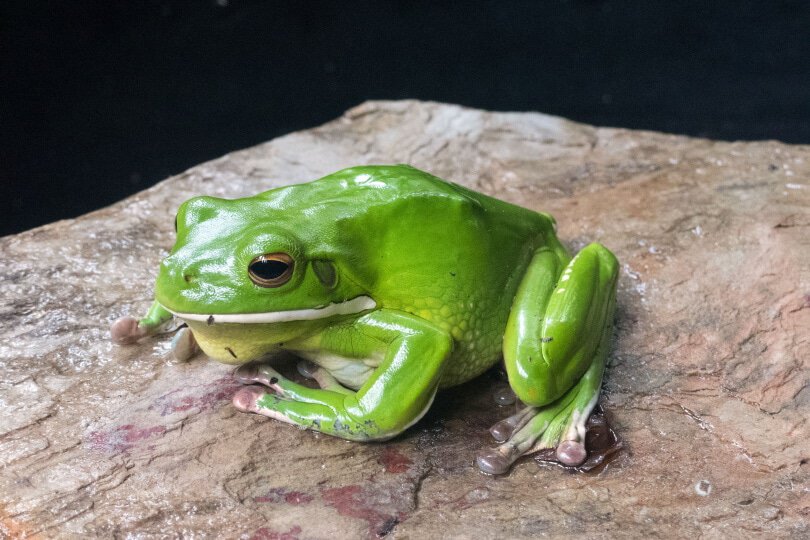If there’s one animal species that you can expect to find in Florida, it’s the frog. It has big frogs, small frogs, poisonous frogs, and harmless frogs.
With 24 different frog species throughout the state, there are plenty of frogs to find. Here, we gave a quick rundown of each species that you might run into.

The 24 Frog Species Found in Florida
1. American Bullfrog
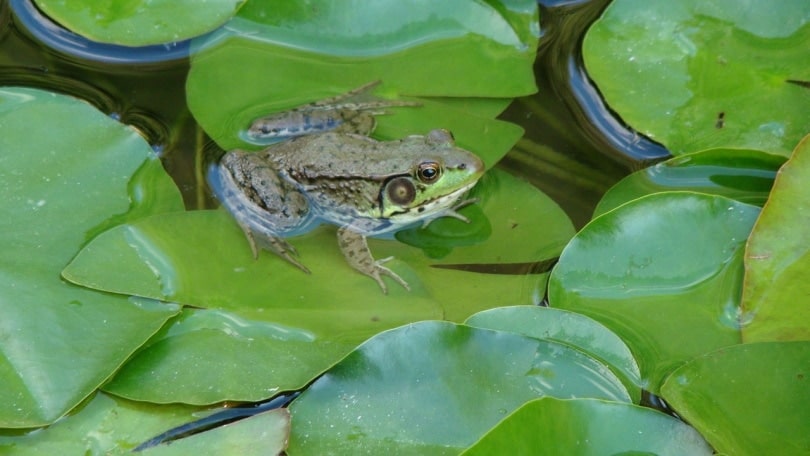
| Species: | Rana castesbeiana |
| Longevity: | 7 to 9 years |
| Good to own as a pet?: | Yes |
| Legal to own?: | Yes |
| Adult size: | 8 inches |
| Diet: | Worms, insects, crayfish, fishes, smaller frogs, small turtles, birds, and snakes |
The American Bullfrog has an extremely expansive natural range, and you can find them along the edges of lakes, ponds, and rivers. They are cannibalistic by nature and territorial toward other bullfrogs.
American Bullfrogs are extremely invasive frogs in other parts of the world but are native to Florida.
2. Barking Treefrog
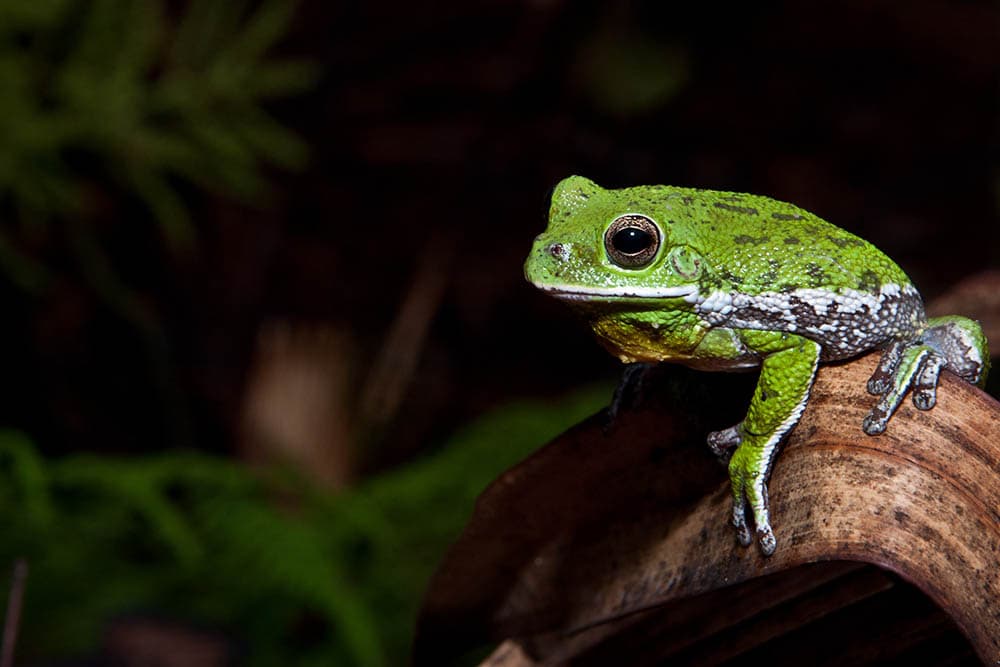
| Species: | Hyla gratiosa |
| Longevity: | 8 to 10 years |
| Good to own as a pet?: | Yes |
| Legal to own?: | Yes |
| Adult size: | 2 to 2.75 inches |
| Diet: | Crickets, earthworms, wax worms, other insects, and smaller frogs |
The barking treefrog has a range across the southeastern United States, and one of their primary ranges is Florida. They have a booming population in these regions and have multiple color variations.
3. Bird-Voiced Treefrog
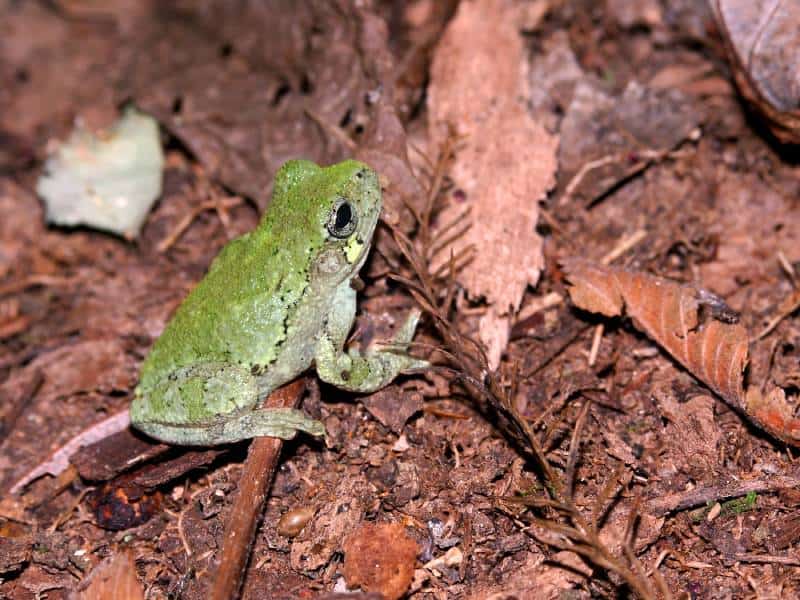
| Species: | Hyla avivoca |
| Longevity: | 5 to 9 years |
| Good to own as a pet?: | Yes |
| Legal to own?: | Yes |
| Adult size: | 2 inches |
| Diet: | Crickets, earthworms, wax worms, other insects, and smaller frogs |
The bird-voiced tree frog has multiple colors that can change depending on different temperatures or activity levels. They have extremely loud calls, and that’s how they earned their bird-voiced name.
4. Carpenter Frog

| Species: | Rana virgatipes |
| Longevity: | 8 to 10 years |
| Good to own as a pet?: | Yes |
| Legal to own?: | Yes |
| Adult size: | 1.6 to 2.6 inches |
| Diet: | Aquatic insects, crayfish, and spiders |
The carpenter frog gets their name from the sound of their call, which sounds like a carpenter’s hammer. They are mid-range-sized frog that has a longer lifespan.
5. Cope’s Gray Treefrog

| Species: | Hyla versicolar |
| Longevity: | 7 to 9 years |
| Good to own as a pet?: | Yes |
| Legal to own?: | Yes |
| Adult size: | 1.25 to 2.4 inches |
| Diet: | Mites, spiders, plant lice, snails, slugs, and other types of insects |
Cope’s Gray Treefrog is a frog with poisonous secretions that can cause mild extreme discomfort to human eyes, lips, nose, or open cuts. You need to be extremely careful after handling these frogs.
6. Cuban Treefrog
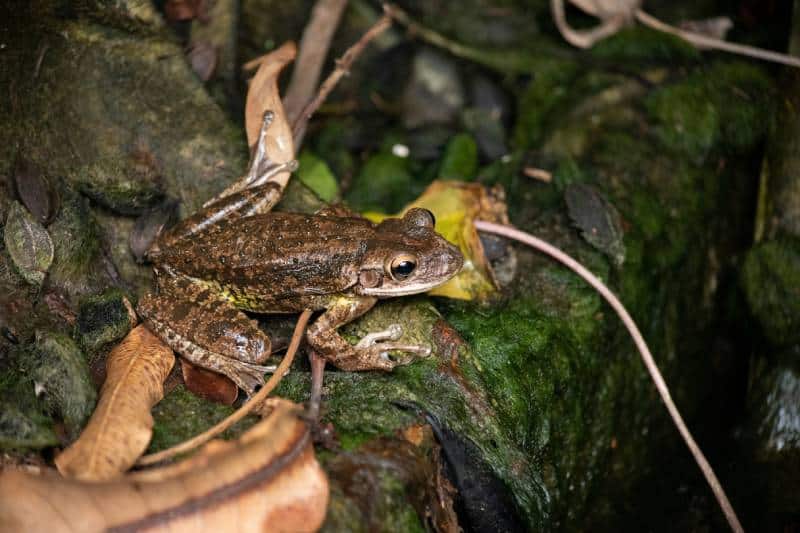
| Species: | Osteopilus septentrionalis |
| Longevity: | 5 to 10 years |
| Good to own as a pet?: | Yes |
| Legal to own?: | Yes |
| Adult size: | 1 to 6 inches |
| Diet: | Snails, millipedes, spiders, other insects, lizards, snakes, and other frogs |
Cuban treefrogs are among the most invasive frogs in Florida. Originally from Cuba, they can get up to 6 inches in size. Since they eat other frogs, this can have detrimental effects on local populations.
7. Florida Bog Frog
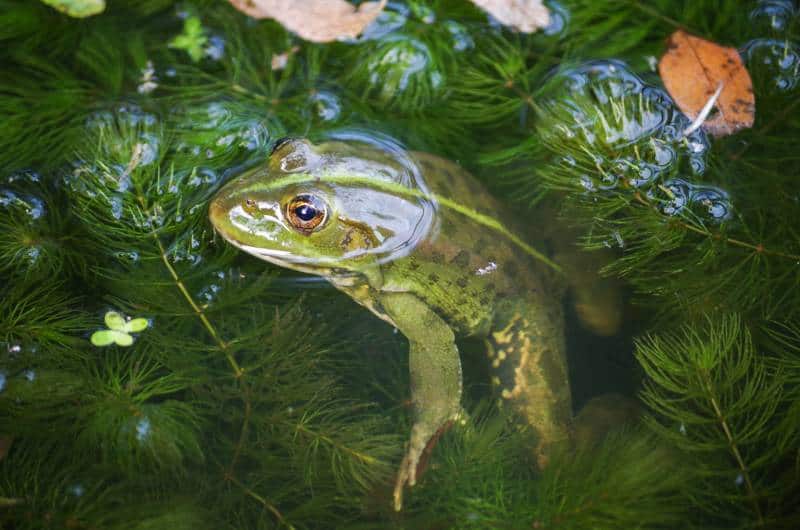
| Species: | Rana okaloosae |
| Longevity: | 6 to 9 years |
| Good to own as a pet?: | Yes |
| Legal to own?: | No |
| Adult size: | 1.9 inches |
| Diet: | Small invertebrates and insects |
Spotting a Florida Bog Frog is far from easy, and if you do, it’s best to leave them alone. They have an extremely small range and are a protected species. You can’t legally take one out of the wild.
8. Gopher Frog

| Species: | Lithobates capito |
| Longevity: | 6 years |
| Good to own as a pet?: | Yes |
| Legal to own?: | No |
| Adult size: | 3 inches |
| Diet: | Earthworms, cockroaches, spiders, grasshoppers, beetles, and other toads or frogs |
The Gopher frog is a protected frog species in Florida. They grow to about 3 inches and have a varied diet that includes other toads and frogs.
9. Green Frog
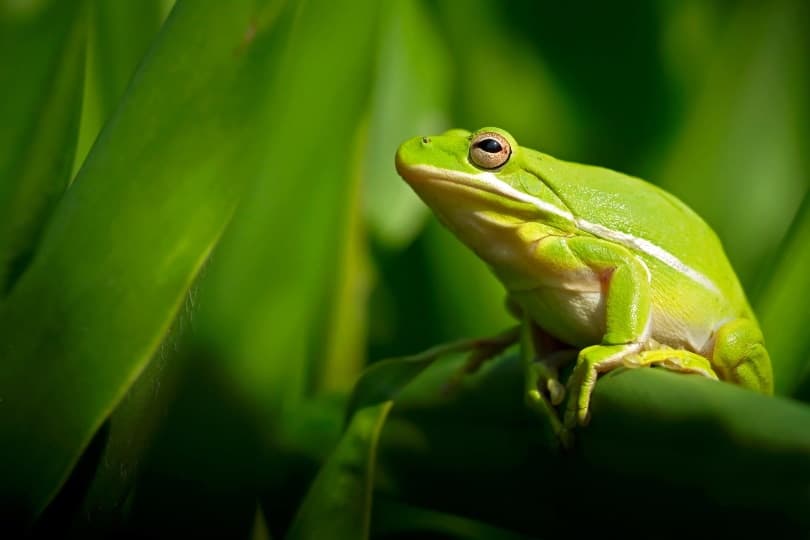
| Species: | Rana clamitans |
| Longevity: | 6 years |
| Good to own as a pet?: | Yes |
| Legal to own?: | Yes |
| Adult size: | 2.3 to 3.5 inches |
| Diet: | Insects, spiders, small fish, crayfish, crustaceans, newts, small frogs, tadpoles, minnows, small snakes, and snails |
The green frog has a varied diet and can reach up to 3.5 inches in size. They make a great pet choice.
10. Green Treefrog

| Species: | Hyla cinerea |
| Longevity: | 6 years |
| Good to own as a pet?: | Yes |
| Legal to own?: | Yes |
| Adult size: | 2 inches |
| Diet: | Crickets, earthworms, waxworms, and other insects and invertebrates |
Similar to the green frog in name, the green treefrog is a completely different species. These frogs live high in trees and only reach about 2 inches in size. They eat whatever they can find in the branches.
11. Greenhouse Frog

| Species: | Eleutherodactylus planirostris |
| Longevity: | 6 to 9 years |
| Good to own as a pet?: | Yes |
| Legal to own?: | Yes |
| Adult size: | 0.5 to 1.2 inches |
| Diet: | Ants, beetles, spiders, earthworms, and mites |
Greenhouse frogs are invasive frog species to Florida and are known to be a bit of a pest. However, removing these frogs is a challenging task because they quickly adapt to human conditions and interventions.
12. Little Grass Frog
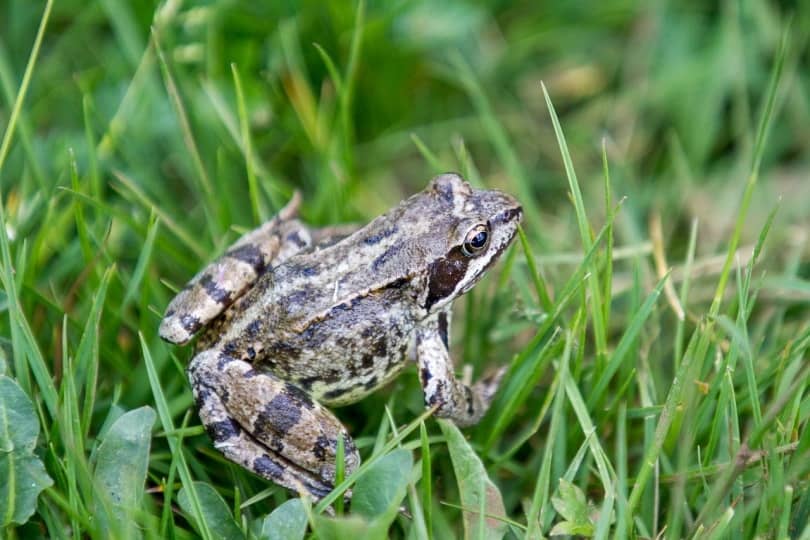
| Species: | Pseudacris ocularis |
| Longevity: | 8 to 9 years |
| Good to own as a pet?: | Yes |
| Legal to own?: | Yes |
| Adult size: | 0.4 to 0.6 inches |
| Diet: | Springtails, ants, parasitic wasps, rove beetles, and homopterans |
The little grass frog is one of the smallest frogs in Florida. They can grow up to 0.6 inches, but the average size is only about 1/2 inch. Despite this, they can live up to 8 or 9 years, although 2-3 years is more common in the wild.
13. Northern Cricket Frog
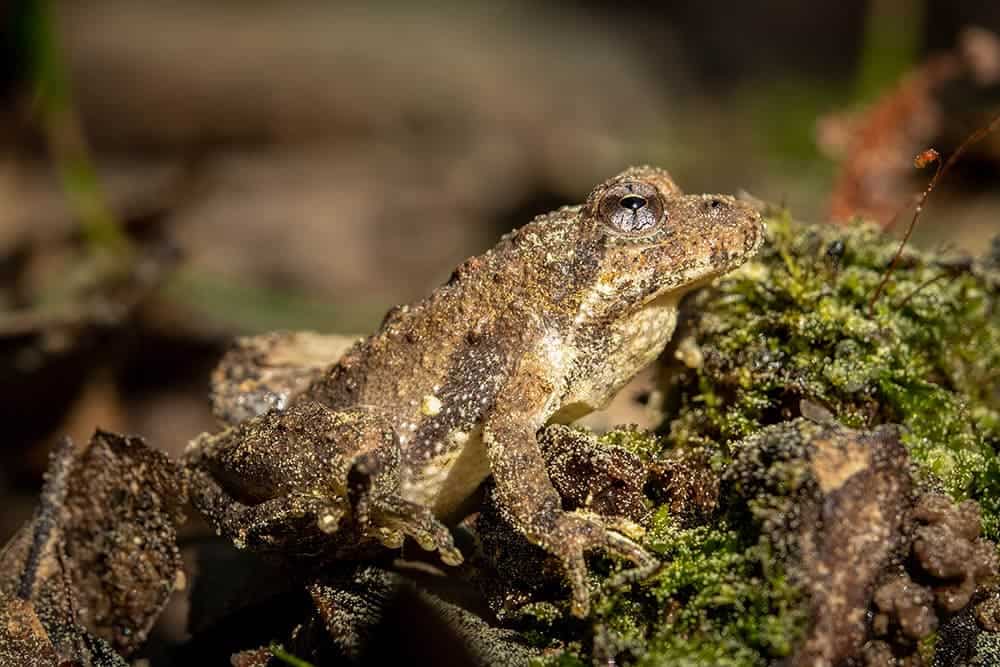
| Species: | Acris crepitans |
| Longevity: | 4 to 6 months |
| Good to own as a pet?: | No |
| Legal to own?: | Yes |
| Adult size: | 1 inch |
| Diet: | Mosquitoes, crickets, water bugs, and arthropods |
The Northern Cricket Frog is a frog species that we don’t recommend keeping as a pet. It has nothing to do with their temperament or size and everything to do with their extremely short lifespan.
They only live about 4-6 months, so to keep them in captivity, you need to constantly breed them.
14. Ornate Chorus Frog
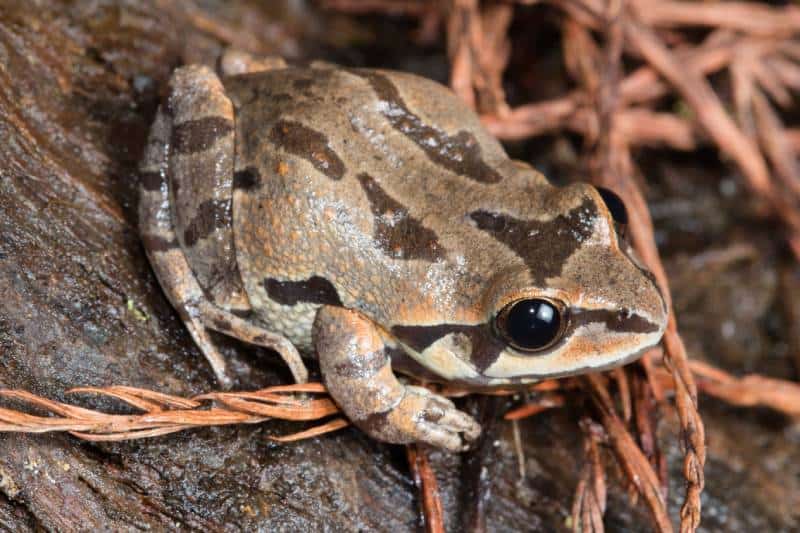
| Species: | Pseudacris ornata |
| Longevity: | 1 to 3 years |
| Good to own as a pet?: | Yes |
| Legal to own?: | Yes |
| Adult size: | 0.75 to 1.5 inches |
| Diet: | Thrips, leafhoppers, beetles, flies, ants, spiders, worms, and snails |
The ornate chorus frog comes in a wide array of color patterns and is among the smallest frogs in the United States. They also have a shorter lifespan, only living for about 1 to 3 years.
15. Pig Frog

| Species: | Rana grylio |
| Longevity: | 6 to 9 years |
| Good to own as a pet?: | Yes |
| Legal to own?: | Yes |
| Adult size: | 3.35 to 6.5 inches |
| Diet: | Crayfish, insects, fish, and other frogs |
If you hear a frog in the wild that makes a snorting sound, there’s a good chance that they’re a pig frog. They’re extremely loud and can get extremely large, growing up to 6.5 inches.
16. Pine Barrens Treefrog
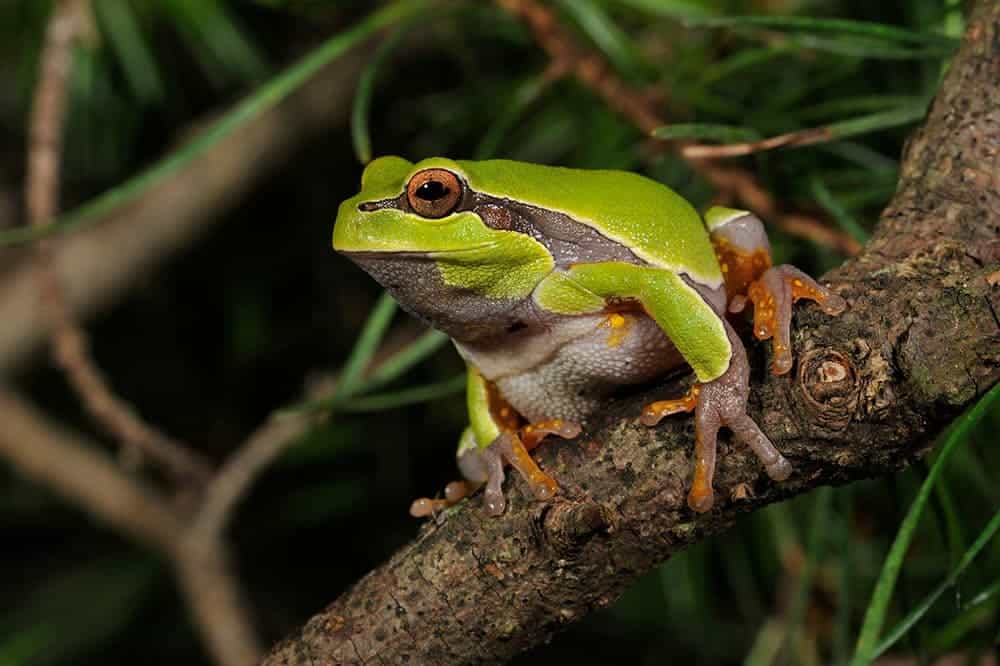
| Species: | Hyla andersonii |
| Longevity: | 6 years |
| Good to own as a pet?: | Yes |
| Legal to own?: | Yes |
| Adult size: | 1 to 1.75 inches |
| Diet: | Ants, flies, beetles, and other small insects |
The third and final protected frog species in Florida is the pine barrens treefrog. The primary reason for their population getting smaller is habitat loss, and it’s currently illegal to take one out of the wild.
17. Pine Woods Treefrog

| Species: | Hyla femoralis |
| Longevity: | 3 to 4 years |
| Good to own as a pet?: | Yes |
| Legal to own?: | Yes |
| Adult size: | 1 to 1.5 inches |
| Diet: | Grasshoppers, crickets, beetles, caddisflies, ants, wasps, craneflies, moths, jumping spiders, and other insects |
To spot a wild pine woods treefrog, you’ll have to look toward the tops of the trees along the ocean, ponds, or lakes. They occasionally will come down to the surface, but they prefer to stay higher up, where it’s a bit safer for them.
18. Puerto Rican Coqui
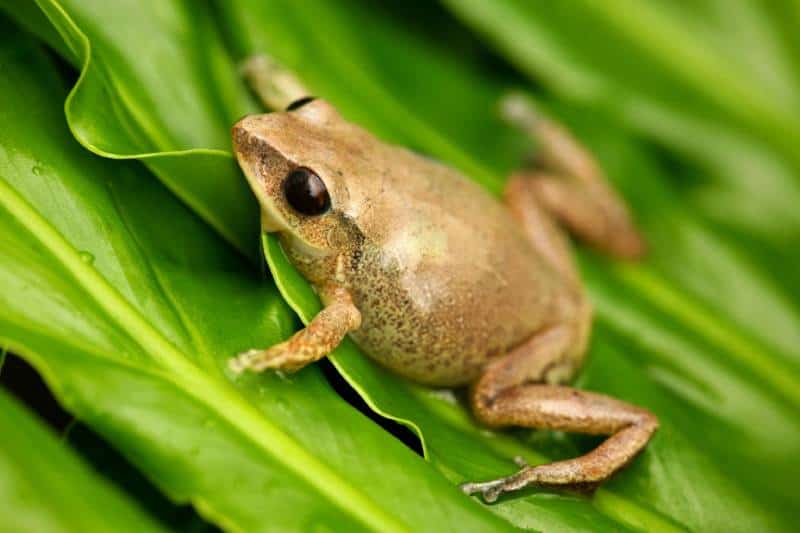
| Species: | Eleutherodactylus coqui |
| Longevity: | 6 years |
| Good to own as a pet?: | Yes |
| Legal to own?: | Yes |
| Adult size: | 1 to 2 inches |
| Diet: | Spiders, crickets, roaches, ants, and small frogs and lizards |
One of the most unique features of the Puerto Rican coqui is the fact that they don’t have webbed feet. Instead, they have special toe pads that allow them to climb straight up vertical structures.
19. River Frog
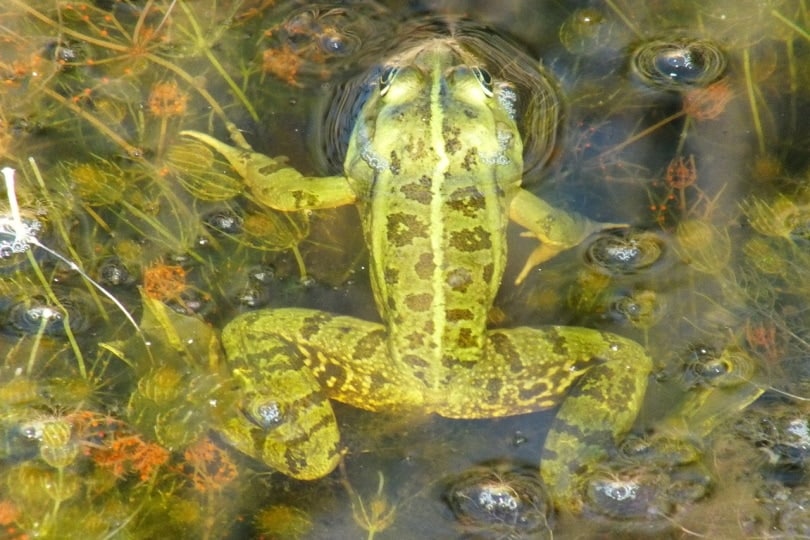
| Species: | Rana hecksheri |
| Longevity: | 7 to 9 years |
| Good to own as a pet?: | Yes |
| Legal to own?: | Yes |
| Adult size: | 3.25 to 4.5 inches |
| Diet: | Small insects and invertebrates and small frogs |
The river frog is a larger frog species that you can find through much of Florida. While you can find these frogs along rivers, as their name suggests, you can also find them in marshes, streams, ponds, and lakes.
20. Southern Chorus Frog

| Species: | Pseudacris nigrita |
| Longevity: | 2 to 3 years |
| Good to own as a pet?: | Yes |
| Legal to own?: | Yes |
| Adult size: | 0.75 to 1.4 inches |
| Diet: | Small insects and invertebrates |
The southern chorus frog is another small frog you can find across Florida’s marshes, wetlands, and forests. They have a shorter lifespan that only ranges about 2 to 3 years.
21. Southern Cricket Frog
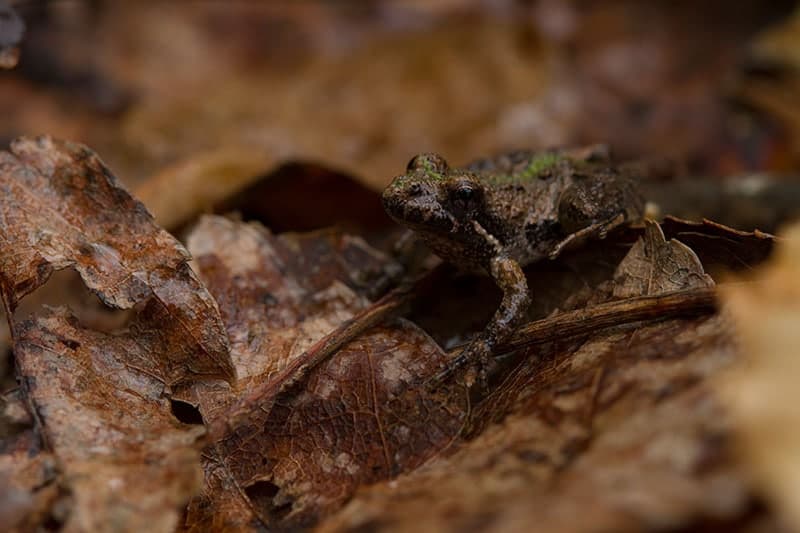
| Species: | Acris gryllus |
| Longevity: | 5 years |
| Good to own as a pet?: | Yes |
| Legal to own?: | Yes |
| Adult size: | 0.5 to 1.25 inches |
| Diet: | Mosquitoes and other small flying insects |
You can find the Southern Cricket Frog across the entire state of Florida. They prefer sunny areas and sound much like a cricket. In fact, the untrained ear might even mistake the two calls.
22. Southern Leopard Frog
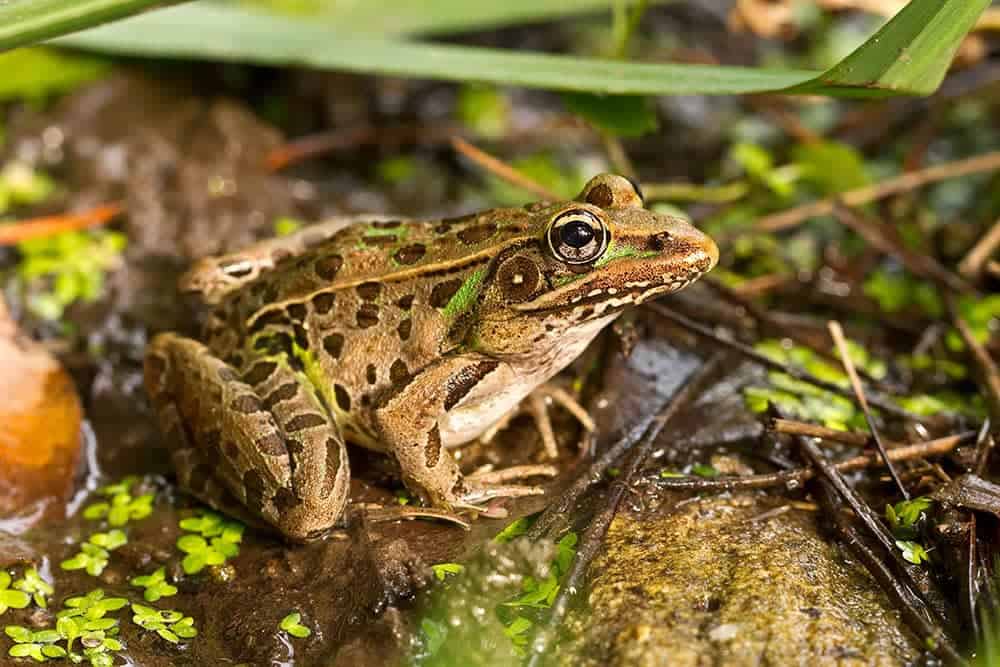
| Species: | Lithobates sphenocephalus |
| Longevity: | 6 to 9 years |
| Good to own as a pet?: | Yes |
| Legal to own?: | Yes |
| Adult size: | 2 to 3.5 inches |
| Diet: | Small insects, arthropods, and worms |
The southern leopard frog has one of the most unique appearances of all the frog species in Florida. They have a spotted pattern along their back that is similar to a leopard. They are a native frog species to the state.
23. Spring Peeper
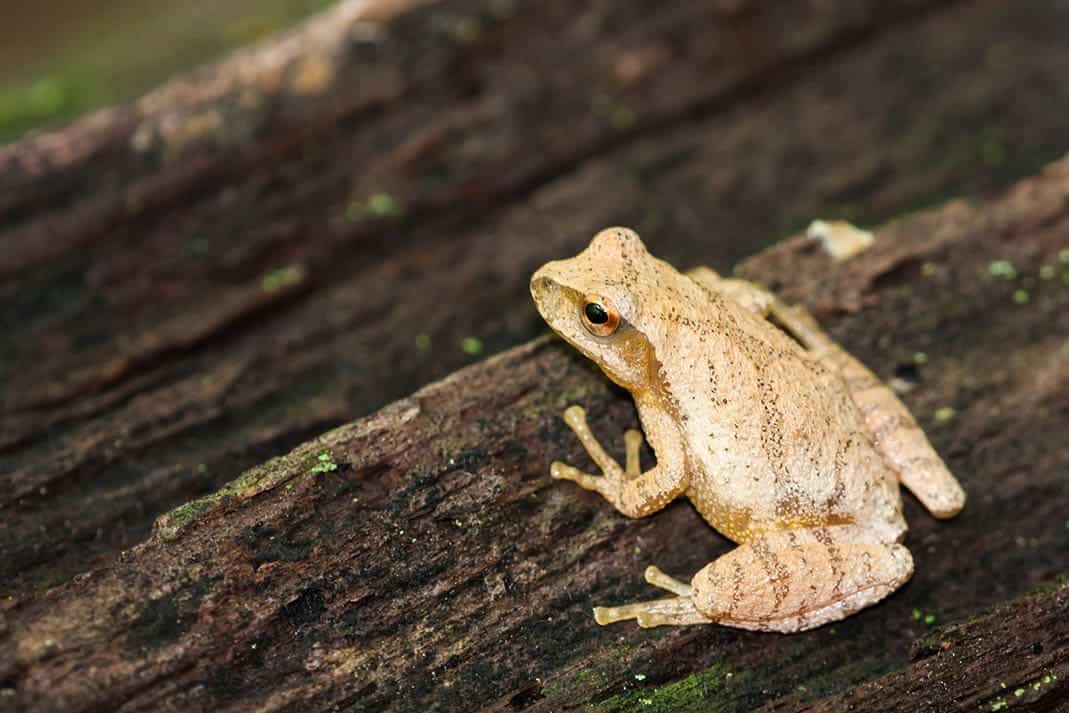
| Species: | Pseudacris crucifer |
| Longevity: | 3 to 4 years |
| Good to own as a pet?: | Yes |
| Legal to own?: | Yes |
| Adult size: | 1 inch |
| Diet: | Beetles, ants, flies, and spiders |
People say that once you hear the spring peeper frog, you know that spring has officially come. But while you might hear these frogs, spotting their small 1-inch bodies can be a bit of a challenge.
24. Squirrel Treefrog
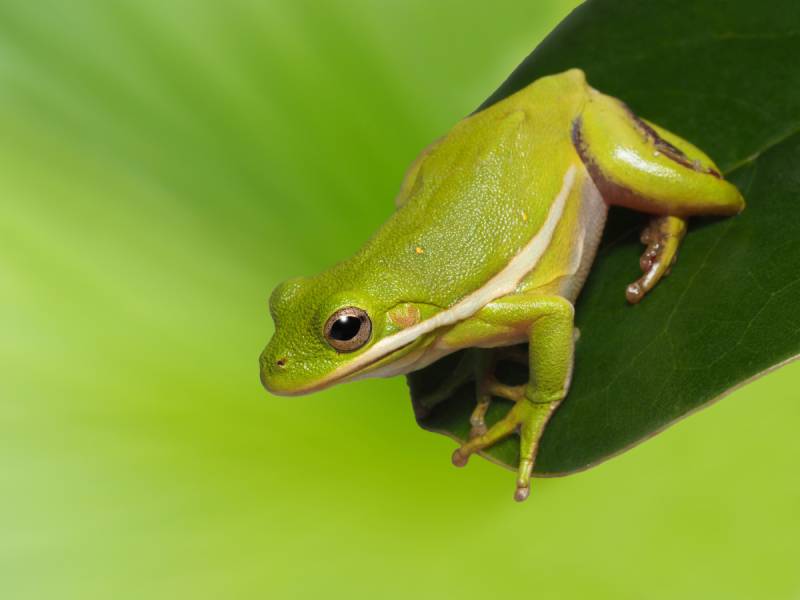
| Species: | Hyla squirella |
| Longevity: | 5 to 9 years |
| Good to own as a pet?: | Yes |
| Legal to own?: | Yes |
| Adult size: | 1 to 1.5 inches |
| Diet: | Foraging and small insects |
Unlike many frog species, the squirrel treefrog prefers foraging instead of chasing insects most of the time. They’re smaller frogs that can only reach 1.5 inches in length, but they can still live up to 9 years!

Final Thoughts
While there are 24 different frog species in Florida, most of them are invasive species that humans introduced into the environment. Today, most of these frogs have found an equilibrium, though, so head out and enjoy these frogs and everything that they have to offer!
- Related Read: 200+ Pet Frog Names for Your Amphibian
Featured Image Credit: Connie Kerr, Shutterstock
